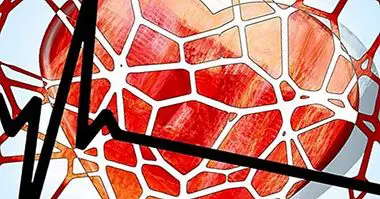Autotopagnosia: the inability to locate the parts of the body
Although we usually talk about the sensory channels that help us to know our environment referring to the "five senses", the truth is that, in reality, there is more.
Touch, for example, is related to our ability to perceive pain and changes in temperature. But there is still another "sense" that we tend to ignore, and whose importance is revealed in those cases in which a neurological disorder makes it disappear. This biological alteration is known as autotopagnosia , and the capacity that suppresses is the ability to know in each moment what parts of the space are being occupied by the parts of the body.
What is autotopagnosia?
Etymologically, the term autotopagnosia already gives clues to its meaning: it is a type of agnosia, such as prosopagnosia or visual agnosia, in which the disability has to do with the possibility of knowing in which positions the parts of one's body are located same or another person or entity.
So, this neurological disorder, which is sometimes also called somatotopagnosia, is expressed in serious problems when it comes to knowing the orientation and placement of body parts or, being this product of an organic lesion in certain parts of the brain.
Causes of autotopagnosia
Normally, autotopagnosia appears associated with lesions in the parietal lobe of the left cerebral hemisphere. However, it is not easy to know its causes in detail.
As in almost all neurological disorders, it is very complicated to locate an isolated cause that explains the appearance of symptoms, because the nervous system (and especially the human nervous system) is tremendously complex, both structurally and in terms of its functioning.
In addition, the cases in which autotopagnosia appears are rare, which makes it difficult to study them. But nevertheless, yes that possible explanations have been proposed about how this alteration appears n.
There are three main hypotheses about what the causes of this disorder may be. The first one conceives the autotopagnosia as a product of a lesion of the posterior left hemisphere related to the language (it could be simply a type of anomie, which is characterized by the impossibility of referring to elements by the name that serves to designate them); the second one understands this failure as an alteration in certain parts of the parietal lobe that intervene when imagining a three-dimensional model of the body; and the third characterizes it as a visuospatial problem also related to the parietal lobe.
The possibility of analyzing in depth the causes of autotopagnosia are hindered by the fact thatand often occurs together with other neurological disorders such as apraxia.
Symptoms of this neurological disorder
People with autotopagosia they have serious difficulties in locating their own body parts , from another person or from a drawn character. In addition, they usually show symptoms of two types:
1. Semantic errors
This type of symptoms correspond to the cases in which, When they are asked to point to a part of the body, they point to another that belongs to a similar semantic category . For example, when instead of pointing to an arm they point to a leg, or when instead of pointing to a knee they point to an elbow.
2. Contiguity errors
This symptom has to do with the inability of the person when it comes to knowing exactly where a part of the body is. For example, When asked to point to the chest, point to the belly , or when asked to point to the ear, point towards the neck.
It is also necessary to point out that not all cases of autotopagnosia are the same, and that while some people are unable to know where the body parts of oneself or another entity are, others may have problems when locating their own, or it may be that when you touch the area of your own body, you realize where it is and what it is, for example.
Treatment of somatotopagnosia
Since it is a neurological disorder caused by injuries, it is considered that the symptoms can not disappear completely and that the marks that remain in the brain because of the wound are irreversible . However, it is possible to work mitigating the symptoms of the disease, teaching the person to adopt habits that make the day to day easier.
Unfortunately, today there are no known pharmacological treatments that have shown efficacy in these cases, so it is necessary to address each case in a specially personalized way to know all the problems faced by patients and the possible opportunities they are exposed to. the time to make progress in their way of acting.
Concluding
The autotopagnosia is a neurological disorder difficult to understand because its nature is still not understood: it could be a failure of the language (that is, problems when it comes to calling things by its name) or visuospatial (that is, related to not knowing where that part of the body is already you know what it's called).
More research is needed to develop more effective intervention programs.



















